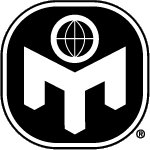How Tariffs Could Backfire

The tactic applied by Donald Trump to punish countries with tariffs who he believes are orchestrating a huge trade surplus with the USA is a blunt one. It does not address the underlying causes of the huge US current account deficit with the rest of the world. American industry has lost its technological edge versus its competitors due to lack of sustained research and development in emerging technology. A classic example is aerospace where Airbus has overtaken Boeing as the world’s premier manufacturer of commercial airliners. Airbus Defence and Space have also ensured that Europe is now leading in the assembly of satellites for commercial and space applications. This would have been unheard of decades ago.
On his so-called Liberation Day, Trump announced tariffs of 10% at least on imports of goods from other countries. China was singled out immediately with tariffs of up to 145% on imports of products of all description. The Chinese immediately put in place their own tariffs on imports of American goods of 125%. This sent world stock markets into a total tail spin, wiping out hundreds of billions of dollars from leading companies such as Apple just to name one classic example. Tariffs were also imposed on Canada and Mexico of 25% despite the fact that both countries are signatories to NAFTA or North American Free Trade Agreement. Trump blames both countries for doing too little to stop the flow of fentanyl into the USA. At this point, the IMF downgraded its growth forecasts for the global economy. Canada was also targeted over its exports of steel and aluminium to the USA. This ignores the fact the USA does possess the capacity to produce all the aluminium it needs, therefore it has to import from its neighbour. A 25% tariff was imposed on imports of cars and this was aimed at Mexico. However this also affects other countries who export vehicles to the USA, notably the UK and Germany. A further 25% tax has also been implemented on imports of car parts and this could seriously knock US car manufacturers such as General Motors and Ford. Trump has also singled out the European Union for venom, claiming that European countries do not buy enough product from the USA. This ignores the fact that European conglomerates such as Siemens are huge investors in the USA and Siemens has opened a rail equipment assembly plant. Siemens Energy is also building a plant to manufacture electrical transformers in the USA.
Manufacturing supply chains will often cross borders in the world of the 21st Century and this is illustrated by the world motor industry. Powdered aluminium is manufactured in Tennesee and sent to Pennsylvania to be turned into rods. These are shipped to Canada to be shaped and polished before being sent to Mexico. These are assembled into pistons before being re-exported back to the USA where they go into a final assembly plant manufacturing engines for the car industry. It need not take an MBA to work out that any interruption of this flow leads to added cost for the end user, in this case the engine plant. General Motors is one company now trying to fathom how this will hit the company’s profits which it will to the tune of hundreds of millions of dollars. The company may not be in a position to pass on these extra costs to its customers and that means one outcome or several consequences. Either the firm has to stop any pay increase for its employees or even lay off staff. Or it has to cut inward investment in new technology and new plant which can be deadly in the automotive sector.
General Motors has now warned that it will be hit by $5bn in extra costs as a result of the tariffs put in place. Other companies operating in the USA such as Chrysler and Stellantis have also refused to offer any more guidance for investors or analysts. Some executives are also considering which components they may be able to manufacture in the USA, thereby avoiding import tariffs completely. Nearly 50% of vehicles sold in the continental USA were imported from abroad. That alone is staggering and demonstrates the weakness of the US car manufacturing base. It must also be said that BMW and Mercedes also opened plants in the USA as has Toyota.
Trade in agricultural produce has also become an explosive issue, notably between the USA and India. India worked on becoming self sufficient in produce to feed a huge population notably through the so called Green Revolution. Huge growth occurred in horticulture and poultry to ensure that the country maintained food security and did not become reliant on imports or food aid. This is perfectly understandable for a society that is very finely balanced between self sufficiency or abject poverty. However India now manages to export certain products such as grains and fruits. This should be applauded in a country that has known awful famine historically.
India does maintain tariffs on food products to protect its agricultural sector and no doubt its population. However the sector still falls behind in terms of productivity and market access. Farming supports 700 million people in India but the majority of farmers are subsistence farmers. Agriculture employs half the workforce but only accounts for 15% of GDP. More people are stuck in low paid roles due to the lack of manufacturing jobs. Donald Trump needs to understand the harsh reality facing some of the poorest persons not just in Asia but also sub-Saharan Africa.
Mark Sandford - Permission granted to freely distribute this article for non-commercial purposes if attributed to Mark Sandford, unedited and copied in full, including this notice.
Members can discuss this and other articles on the economics forum at International Mensa.